How orthodontists in New York, Virginia, and Kentucky, found a practice model in PepperPointe that offers greater control of their practices’ future and the way they practice.
By Steven Martinez | Photography by Emily Giancarlo
Dental service organizations are slowly but surely making their way to orthodontics. After seeing what DSOs have done to transform the business of private general dentistry, many orthodontists are wary of what that change could mean for their segment.
But PepperPointe Partnerships bills itself as a hedge against that change by offering a doctor-owned DSO model that seeks to give doctors the same strengths of a private-equity-backed DSO without turning the temple over to the money changers.
So far, PepperPointe has expanded from Kentucky to Virginia and New York, totaling 137 office locations and more than 147 orthodontists, general dentists, and pediatric dentists. What inspired their model, and what makes it different from the multitude of DSOs pitching practice owners across the country?
The Great Sell-Off
In 2008, after the housing bubble burst and Lehman Brothers’ bankruptcy brought the market down with it, the dental industry, like so many other sectors of the economy, found itself in the throes of change.
Greg White, DMD, MSD, co-owner of White, Greer & Maggard Orthodontics in Lexington, Kentucky, and founder of PepperPointe Partnerships, says he started noticing that dentists were tightening their belts to weather the economic storm, and a growing number were selling. Except they weren’t selling to other dentists, they were selling to DSOs.
White estimates that between 2008 and 2013, DSOs grew from 2% of the general dentistry market to 13%.
This great sell-off had significant implications for the dental industry, says White. Retiring practitioners were no longer selling to younger dentists, following the traditional legacy ownership model. New doctors, indebted by larger school loans, found that the only people hiring were corporate-owned practices.
Legendary investor Warren Buffett once advised his shareholders “to be fearful when others are greedy, and greedy when others are fearful.” In White’s estimation, dentists were doing the opposite, conservatively conducting business and looking for an exit when they should be focused on growth.
“Dentists do what dentists do in difficult times. We hunker down and try to save ourselves to prosperity,” says White. “In doing that, we become very cost-conscious, and we don’t start thinking about the opportunity to grow revenue or build a practice to expand.”
While the move to DSOs mainly affected general dentists, White saw a growing threat to orthodontics, one of the last bastions of private practice ownership in medicine.
“I thought this could be a potential threat,” says White. “Because if they come in and start buying your competitors or buying your referral sources up, orthodontists being the last fish in the food chain, become quite vulnerable.”
To counteract the threat, White decided to expand his practice, switching from an organic growth model and growing through mergers and acquisitions. White says he realized that only by partnering with former competitors would he be able to weather the approaching storm.
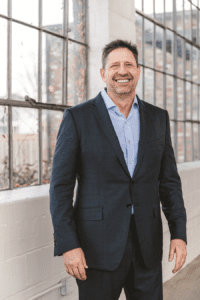
“I went to some of our orthodontic colleagues, and I said, ‘We really need to stop thinking of each other as competitors and start thinking of each other as partners.’” says White. “The changing marketplace is our true competition now.”
From September 2014 to April 2015, he expanded his practice from 7 locations to 14 through mergers and acquisitions. Further expansion by opening new locations brought his total to 19 practices by 2018 under White, Greer & Maggard. At that point, White centralized his practice’s back-office functions at a separate facility that they named PepperPointe. It handled HR, payroll benefits administration, recruiting, strategic planning and budgeting, operational support, negotiations with vendors and payers, credentialing, general finance, and accounting support for each of the individual offices.
But while White had been expanding his empire, the DSOs had also ramped up their growth. With a growing group of partners whose ages ranged from 33 to 65, White began to look into the value proposition that private equity backed DSOs were selling.
Doctors reported selling their practices for 3 to 5 times the rate they might get in the traditional market. But when he talked to the DSOs and got past the “touchy-feely rhetoric,” he discovered a simple math formula. They were paying doctors a large sum upfront that correlated to a multiple of what the business earned in a year to buy the practice, offering doctors a short-term contract to work for a few years for a reduced salary until retirement, and promising a certain return on shares in the DSO when it eventually sold to another investor.
At the end of the contract, doctors were left with whatever money they still had from the buyout and whatever the shares were worth in an eventual sale.
According to White, it was a financial shell game that amounted to nothing more than a cash advance on a few years of profits at the cost of the practice’s ownership.
But, according to White, more than some funny arithmetic, the worst thing to come from a private equity takeover was selling out the profession’s future. New doctors were losing the opportunity to become practice owners themselves and instead became salary workers with little hope of upward mobility. In turn, patients also suffered as offices faced regular turnover and disconnect from the community they inhabited.
“You don’t have to look very far to see what the end result of this is. We’ve seen it in medicine, we’ve seen it in pharmacy, and we’re seeing it in dentistry now,” says White. “I thought, if this is going to be my last decision as an owner, I don’t want to make my worst decision.”
A DSO Without Private Equity
White says that PepperPointe Partnerships wasn’t formed; it evolved out of necessity. He wanted to be financially responsible but also hold to his and his partners’ core values of doing what is best for patients and the profession.
From there, he began asking doctors why they might want to sell to a DSO. Was it all about the money? Were they strapped for cash? Why would a practice owner who had been a doctor for decades suddenly want to cash out?
Their responses: the fear of missing out on the high valuations being offered, the hassle of managing back-office operations, and a general weariness at all the disruptions and changes afflicting orthodontics.
“Nobody said I’m strapped for cash,” says White. “So, I thought, well, if we could mitigate those disruptions, if we could take away some of the burdens of the back-office functions, if we could protect your income going forward, would that be something that would be appealing?”
The doctors he spoke to showed interest, so using his PepperPointe back-office operations as a foundation, White came up with a model of group ownership that would have practices self-consolidate without buying anyone out of ownership.
The practices would form a local large group practice and use PepperPointe’s centralized back-office management to streamline operations and use that synergy to compete with the changing marketplace. By allowing associates to buy into ownership, the model also reconstituted the traditional transition model into one that would better function within the changing marketplace.
Doctors would have ownership in the group practice, but they also received ownership of PepperPointe the company. Rather than selling out, they maintained control and ownership of their profits. When doctors were ready to sell, they could sell their shares back to the group practice, which in turn would create an ownership opportunity in the group for associate doctors and, through ownership in PepperPointe, have a source of passive income that would follow them into retirement. Their transition of ownership and control is the cornerstone of the PepperPointe model.
The First PepperPointe Group DSO
On August 3, 2019, 20 practices, 16 pediatric dental practices and 4 orthodontic practices with 50 locations, including the 19 of White, Greer & Maggard, came together to form one group practice and DSO—the first under the PepperPointe umbrella.
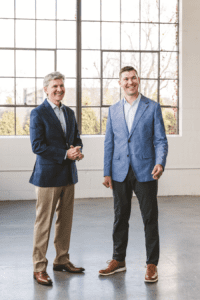
“We created protection for the group,” says White. “Everybody still practices under their same name—the exact same places, same people. It protected their staff. It protected ownership in that practice forever through a transition model to the next generation. It creates an exit plan for that doctor, and it creates passive income in retirement for that doctor. So that’s how we’re different.”
After creating the first group, general dentists saw what he had done and approached White, asking if they could do the same thing. Fourteen months later, 37 independent practices with 42 locations representing 47 partner doctors came together to form their own group practice and DSO with the same features.
In 2022, two more groups formed for the first time outside of Kentucky. One in western New York and another in Virginia.
“They all have one thing in common,” says White. “They absolutely believe in what they built. They believe in preserving their legacy. They believe in leaving this profession better than they found it, not worse.”
Each group has its own leadership and own ownership. They are tied together through PepperPointe Partnerships, which gave them a consolidation model, drawing up practice contracts they agreed to enter together. Once the consolidation is complete, PepperPointe then supports the groups based on their stated goals. White compares it to a financial planner.
It also provides back-office services, similar to those of other DSOs, and uses the leverage of consolidation to negotiate with third-party payers and vendors to improve profitability. PepperPointe has no ownership of a given group, but each group does pay a certain percentage of net profits to PepperPointe for the services it provides, which White assures is more than made up for by the advantages of the group model.
“It resonates at the core of almost every doctor because, ultimately, they all want to do what’s right,” says White. “They want to do what’s right for their staff. They want to do what’s right for their patients, their communities, and the next generation.”
The Orthodontist’s Perspective
Stan Ferguson, DMD, MSD, was a Kentucky orthodontist who merged his practice into White, Greer & Maggard Orthodontics in 2018 and was part of the first PepperPointe Group DSO. Practicing since 1995, he had worked with several partners in his career and says that being part of a larger group allowed him to focus on the aspects of his career he enjoyed the most.
“It’s allowed me to really just practice the way I want to practice and not worry about the day to day back-office functions,” says Ferguson. “It’s been good for my family, my time, and allows me to do what I enjoy, which is work on patients.”
The change also ushered in an atmosphere of camaraderie amongst doctors who were now working toward the same goal.
“I immediately acquired a group of colleagues who all have the same vision. We care about each other. We want each other to succeed,” says Ferguson.
Andrew Dusel, DDS, is one of three partners at Orthodontists Associates of Western New York, one of the practices that make up the New York group. Having moved up from associate to full partner only a few years before, the transition to a DSO was less about planning for retirement and more about ensuring he had support for the future.
Being the youngest partner, he was worried about a situation that might see both his partners retire close together, leaving him to deal with a sudden significant change.
“The more I thought about it, it was a little daunting because they could both decide that they wanted to retire pretty close to one another, and then I’d be there trying to pick up the pieces a bit,” says Dusel. “Not that they would do that to me, but it certainly could happen.”
For Dusel, having the support of other partners at PepperPointe was attractive because he knew he wouldn’t have to face change alone. The group offered stability and help along the way for when his partners did decide to retire because he would reap the benefit of having a group behind him and the financial backing to help facilitate the buyout process in the future.
“It’s much more attractive for the graduating orthodontic resident to come into a situation like we’ve built rather than to come into one of the larger DSOs where there’s really no room for ownership,” says Dusel. “It’s definitely going to be a more attractive pathway for a lot of these younger orthodontists and pediatric dentists.”
Norman Prillaman, DDS, of Lynchburg, Va, was one of the doctors who joined the Virginia group practice under PepperPointe Partnerships. Having owned and operated his practice, Orthodontic Arts since 2001, he noticed some of the doctors in his area selling to DSOs around the start of the pandemic.
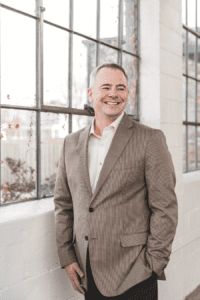
While he and his partner Richard Sterne, DDS, had weathered the Covid-19 downturn, they were intrigued at why people were selling to DSOs and understood all too well that their fortunate situation could change at any time. So, they began looking into what it would look like. While he wasn’t dismayed at the concept of selling his practice’s ownership and working for a salary, he didn’t like that doctors were heavily incentivized to leave after 5 years.
“I love what I do as an orthodontist,” says Prillaman. “I could see myself doing this for a very long time. I’m 56 years old, and I have the same passion. I’ve set up a 3-day work schedule. My goal was to not have disruptions come in and change the life that I have.”
A friend of Prillaman’s had spoken to White about what he had done in Kentucky and having read about PepperPointe in a 2019 article in Orthodontic Products magazine, he called White to see if what he had read was too good to be true. The more he spoke to White, the more he realized it aligned with what he wanted, particularly the point about preserving the legacy of doctors.
Prillaman’s daughter expressed interest in becoming a dentist. He wanted her to have the same opportunities he had when he was coming up and feared that the changing environment would prevent her from having that. He spoke to some of the orthodontists in Kentucky who were part of the initial group. Formerly fierce competitors described to him a collegial atmosphere of partners and said they were at peace with their decision to consolidate. Their description of the environment reminded him of his residency, a time he remembers fondly, where he could share ideas with other doctors and have a support network.
Only a few months into forming a group in Virginia, Prillaman says he has experienced a similar transition and is at ease with his decision.
“For our staff, we’re the same happy family,” says Prillaman. “We’ve got some checks with different names on them and things like that, but the difference for me has been that I don’t have to worry. We have a support network. It’s just a real peaceful feeling.” OP


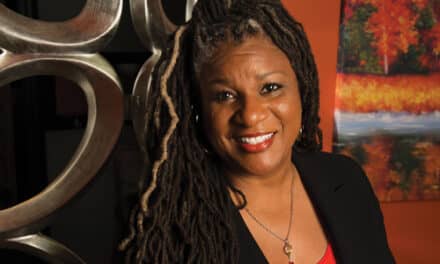


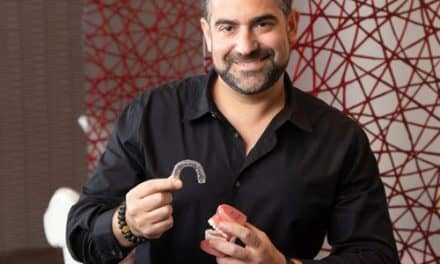





The report lacks specifics as to how joining will actually help aside from negotiating costs/insurance. It would be nice to update what specifics benefits are by joining other than being at peace with the decision.